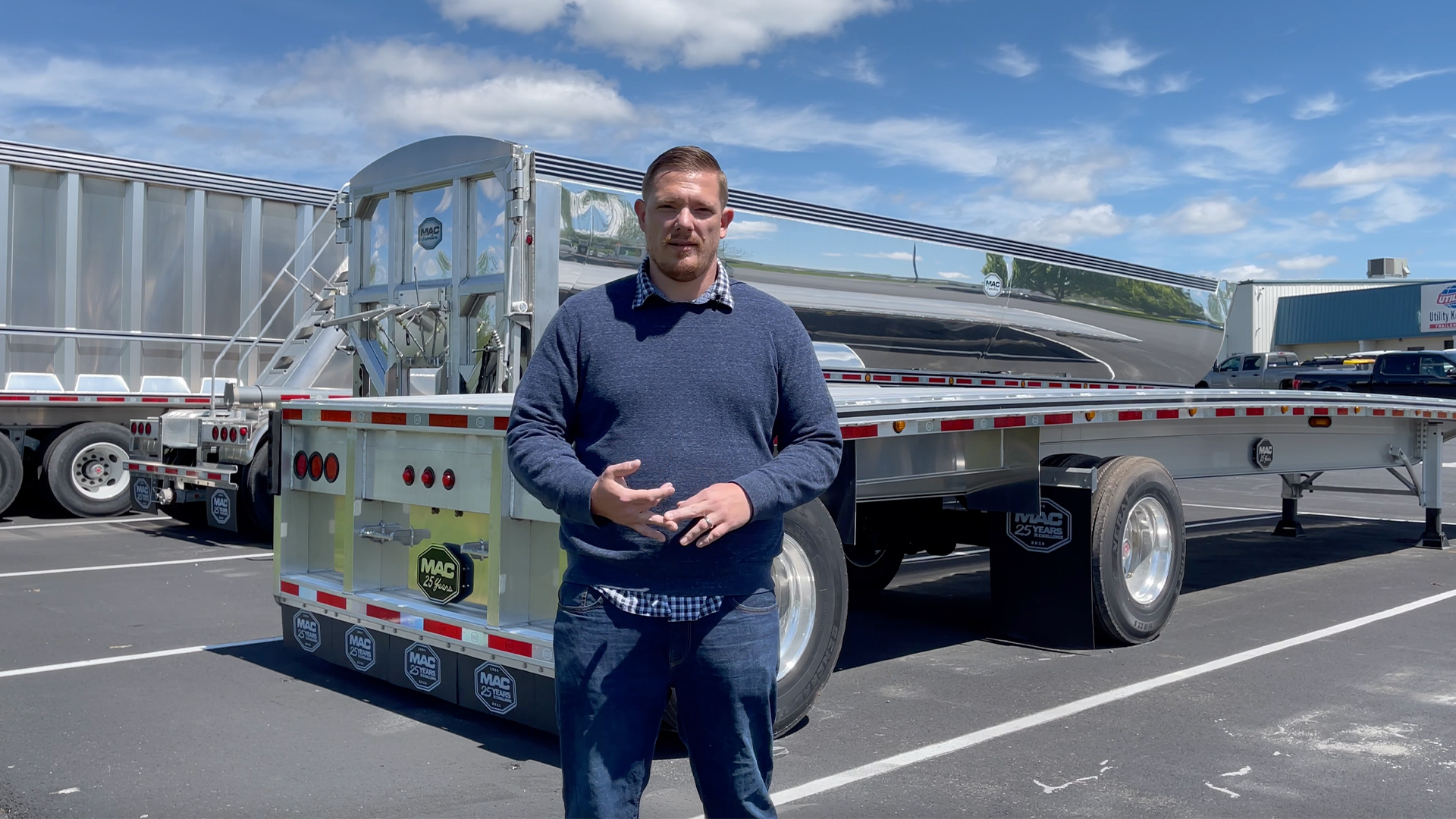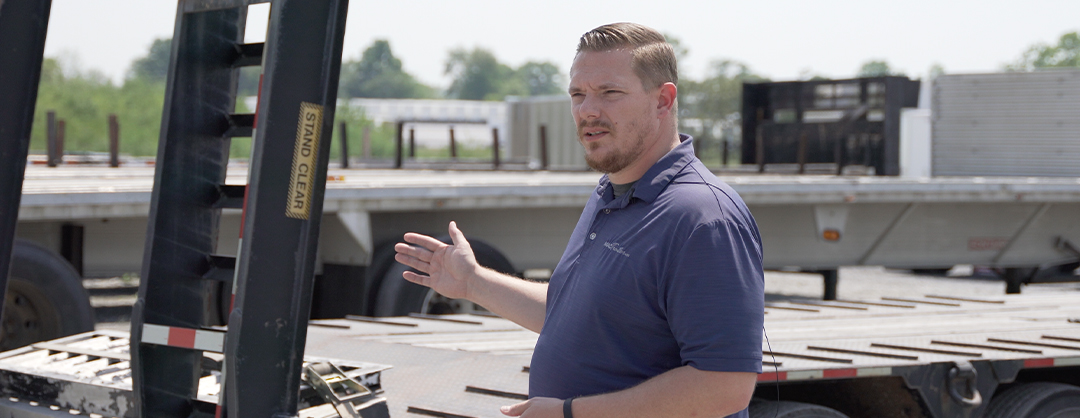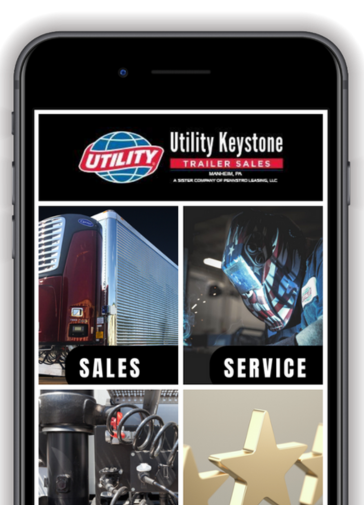3 Types of Semi-Trailer Flatbeds
Welcome! Today we’re discussing the three flatbed trailer types, which is part of our series on “How to Buy the Best Flatbed Trailer.”
A lot depends on what you want to get out of your trailer. Choosing the right flatbed for you is going to depend on what you’re hauling, where you’re hauling, and how long you’re holding onto the trailer.
If you’re looking for something flashy, maybe an aluminum trailer is the way to go. But, if you’re looking for something to go to work, maybe you’re looking at a combo trailer. If you need something heavy-duty, an all-steel trailer could be right for you.
Today we’ll review each of the tree flatbed trailer types to find the one that’s right for you. Some of the questions we’ll ask are:
- How much does a combo trailer cost?
- Can I customize my flatbed?
- What are the different flatbed trailer types?
- How much does a flatbed trailer weigh?
- What is a combo trailer?
- Aluminum vs. steel flatbed trailer, which is best?
Aluminum – Flatbed Trailer Type
Lightest Option
Aluminum flatbed trailers are typically your lightest option, lighter than steel or combination trailers, consisting entirely of aluminum – beam, side rails, and floors.
Higher Cost
Aluminum trailers cost more than a combo and steel trailers, but on the upside, they do have a higher resale value.
Customizable
Aluminum flatbeds are highly customizable. Options include:
- Filled in rear end
- Additional light packages
- Aluminum wheels
- Lift axle
- Additional nailers
- J-hook tracks
- More options with length, width
More deflection in the beam
Aluminum deflects more than steel, so aluminum flatbeds have a higher arch (camber) in the trailer to compensate. As it is loaded and weight is applied to the beam, it will level out more.
Increase cross member spacing
Aluminum cross members need to be closer than steel cross members to support the additional weight from deflection, especially in applications where you’re rearing-loading with a forklift.
Preventing corrosion on your flatbed trailer
- Consider galvanizing to prevent the dissimilar metals from corroding, specifically around the suspension hangers made of steel.
- Also, aluminum is susceptible to cracking with age due to the flexing of aluminum. Keep an eye on the suspension hanger for cracking.
Combination – Trailer Type
Combo flatbed semi-trailers are comprised of a steel beam, aluminum floor, and aluminum side rails. They provide the weight-savings of aluminum with the strength of the steel beam.
Utility Manufacturing and others are pumping out a lot more fleet-spec flatbeds – your work trailer designed to make money.
How much does a combo trailer cost?
Combo trailers are less expensive than aluminum trailers and slighter more expensive than steel.
How much does a combination flatbed trailer weigh?
These trailers are lighter than all-steel trailers but typically not as light as aluminum.
Pros:
- Less camber in beam = flatter trailer. Making it easier to load lighter material
- Easier to set up with a sliding tarp kit because of less camber in the beam
Cons:
- Steel is more prone to rust
- Typically less customizable than aluminum trailers
All Steel – Trailer Type 
Steel trailers are built entirely of steel, including the beam, side rail, and suspension hangers, making them heavier than aluminum or combo.
How much does a steel trailer cost?
Steel trailers are a lower upfront investment; however, you won’t get as much on the resale value. It’s built to last and will be a good work trailer.
Pros:
- Steel trailers have a wood floor that provides nearly unlimited load securement options.
- Most durable out of the three. Since the entire trailer is steel fewer issues with corrosion due to dissimilar metals.
- Cheapest upfront option
Cons:
- The wood floor will eventually wear out and will need to be replaced
- Steel is more susceptible to rust, especially in the northeast.
- Lesser resale valueUtility Keystone works hard at finding the best solution to meet the demands of your hauling requirements.
Read more in this series, How to Buy the Best Flatbed Trailer.
- How to Buy the Best Flatbed Trailer
- 3 Types of Semi-Trailer Flatbeds
- Conestoga vs. Curtainside Trailer
- 7 Ways to Maximize Payload on a Flatbed
- Beam Ratings on a Flatbed Semi-Trailer
- 5 Ways to Prevent Damage to Your Flatbed
- Load Securement Options for Flatbed Semi-Trailers
- Hauling Equipment on Step Decks and Flatbeds
- Bulkheads and Accessories for Flatbeds
Bulkheads and Accessories for Flatbeds
Read Articles on How to Buy the Best Dry Beds
Conestoga vs Curtainside Semi-Trailer
Curtain Side and a Conestoga Trailers are great options to keep your cargo protected from harsh elements, and both are an easier, safer way of tarping your load
Everything There is to Know Before Buying Your Next Flatbed Trailer
Everything You Need to Know Before You Buy Your Next Reefer Trailer. We’ll take a deep dive into how you can buy the best reefer trailer spec’d with your particular requirements and needs in mind.
How to Haul Equipment on Step Decks and Semi-Trailer Flatbeds
Hauling Equipment on Step Decks and Flatbed Trailers. Beaver tail, ramps, and Moffett kits.








